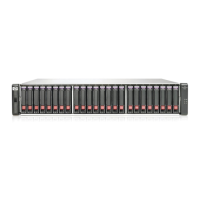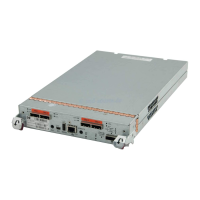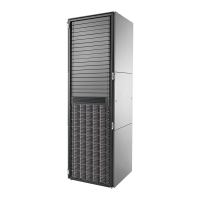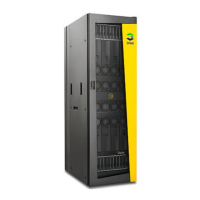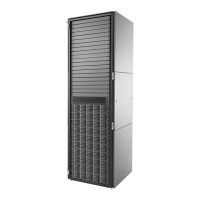HP P2000 G3 MSA System CLI Reference Guide 21
XML API optimization
The following are two ways to optimize XML API performance:
• Use embedded objects. This allows one object to contain not only properties but also other objects. In
general, parsing a structure such as this is easier as the association between objects is simpler. This is
an alternative to using COMP elements.
• Use brief mode. In brief mode, which is disabled by default, returns a subset of attributes of object
properties. The name and type attributes are always returned. Other properties can be obtained by
using the meta command with the basetype of the object. This optimization reduces the number of
bytes transmitted for each request and allows caching of CLI metadata. Brief mode can be enabled or
disabled by using the set cli-parameters command.
In the following example, which uses brief mode, embedded objects contain media-specific detail for
ports:
# show ports
<?xml version="1.0" encoding="UTF-8" standalone="yes"?>
<RESPONSE VERSION="L100">
<OBJECT basetype="port" name="name" oid="1" format="rows">
<PROPERTY name="durable-id">hostport_A1</PROPERTY>
<PROPERTY name="controller" key="true">A</PROPERTY>
<PROPERTY name="controller-numeric" key="true">1</PROPERTY>
<PROPERTY name="port" key="true">A1</PROPERTY>
<PROPERTY name="port-type" type="string">FC</PROPERTY>
<PROPERTY name="port-type-numeric" type="string">6</PROPERTY>
<PROPERTY name="media">FC(-)</PROPERTY>
<PROPERTY name="target-id">target-ID</PROPERTY>
<PROPERTY name="status">Disconnected</PROPERTY>
<PROPERTY name="status-numeric">6</PROPERTY>
<PROPERTY name="actual-speed"></PROPERTY>
<PROPERTY name="actual-speed-numeric">255</PROPERTY>
<PROPERTY name="configured-speed">Auto</PROPERTY>
<PROPERTY name="configured-speed-numeric">3</PROPERTY>
<PROPERTY name="health">N/A</PROPERTY>
<PROPERTY name="health-numeric">4</PROPERTY>
<PROPERTY name="health-reason">There is no host connection to this host
port.</PROPERTY>
<PROPERTY name="health-recommendation">- No action is required.</PROPERTY>
<OBJECT basetype="fc-port" name="port-details" oid="2" format="rows">
<PROPERTY name="configured-topology">Loop</PROPERTY>
<PROPERTY name="primary-loop-id">0</PROPERTY>
</OBJECT>
</OBJECT>
<OBJECT basetype="port" name="name" oid="3" format="rows">
<PROPERTY name="durable-id">hostport_A2</PROPERTY>
...
</OBJECT>
<OBJECT basetype="status" name="status" oid="5">
<PROPERTY name="response-type">Success</PROPERTY>
<PROPERTY name="response-type-numeric">0</PROPERTY>
<PROPERTY name="response">Command completed successfully.</PROPERTY>
<PROPERTY name="return-code">0</PROPERTY>
<PROPERTY name="component-id"></PROPERTY>
<PROPERTY name="time-stamp">2012-01-27 12:11:10</PROPERTY>
<PROPERTY name="time-stamp-numeric">1281442270</PROPERTY>
</OBJECT>
</RESPONSE>
